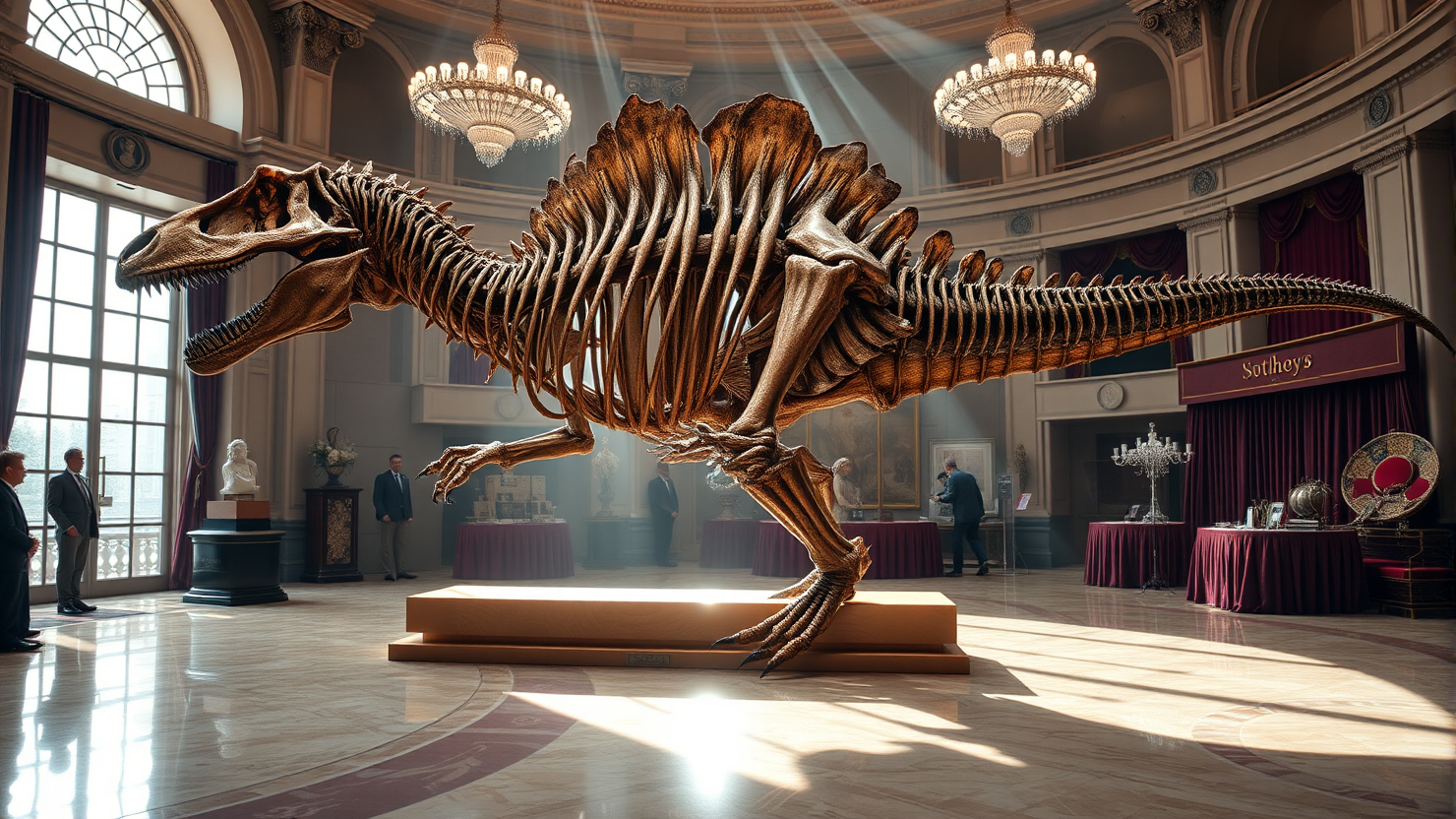Record-Breaking Sale: Rare Ceratosaurus Fossil fetches $30.5 Million at Auction

The sale of a rare and highly coveted Ceratosaurus fossil, one of only four known to exist, transpired at Sotheby’s New York auction house this week. According to a statement issued by the esteemed institution on Wednesday, this exceptional specimen represents “one of the finest and most complete examples of its kind ever discovered.”
In the competitive bidding process that ensued, the Ceratosaurus nasicornis fossil, which is unique as the only juvenile among the known four, surpassed its estimated value of $4 million to $6 million by a significant margin, fetching an impressive sale price of $30.5 million.
Ceratosaurus nasicornis was a formidable carnivore characterized by its nasal horn, long teeth, and bony armor that ran along its back and tail. The juvenile fossil in question stands six feet, three inches (1.9 meters) tall and measures approximately 10 feet, eight inches (3.25 meters) in length, composed of 139 bone elements, including a “superb virtually complete skull” consisting of 57 individual pieces.
The fossil was initially unearthed at the Bone Cabin Quarry in Wyoming during 1996 and dates back to the late Jurassic period, approximately 150 million years ago. From 2000 to 2024, it was exhibited at the Museum of Ancient Life in Thanksgiving Point, Utah, without having undergone formal scientific study or description in a journal.
Sotheby’s announced that the anonymous buyer intends to loan the fossil to an institution for display, acknowledging its significant historical and academic value.
In the same sale, a meteorite representing the largest known piece of Mars on Earth sold for $5.3 million. This auction highlights a growing enthusiasm and respect for natural history, as evidenced by the prices fetched by rare and unique specimens.
Cassandra Hatton, global head of science and natural history at Sotheby’s, expressed this sentiment in her statement: “What draws collectors is more than just a passion for science; it’s a deep-seated curiosity about the forces that have shaped our planet and beyond.”
Professor Mark Westgarth, a historian of the art market at the University of Leeds, England, noted that this sale represents a recent resurgence of interest in fossils and natural history. The Ceratosaurus fossil sale follows Sotheby’s record-breaking auction of Apex the Stegosaur, which garnered $44.6 million in July 2024.
While some experts, such as Steve Brusatte, a professor of paleontology and evolution at Scotland’s University of Edinburgh, express concerns about the accessibility of these valuable fossils for educational institutions and the public, others argue that there is a symbiotic relationship between the market and wider research interests. Professor Westgarth cites the example of Mary Anning, who discovered fossils on England’s south coast in the early 19th century and went on to open a successful fossil shop, as evidence that the market for fossils can stimulate public interest and increase research activity on dinosaur fossils.






